#g a switch port) so the route for 2 and 3 was to be. Extremely derivative
Text
i've heard basically nothing but good things about xenoblade 3 which is a real surprise, maybe ill check it out
#op#i will always be extremely disappointed in the direction that series went esp bc the first one really doesnt need any elaboration#where x was kind of this weird and unasked-for sequel that didnt really have a ton of ideas in common with the original but was still#interesting and cool but got kinda fucked by virtue of being a sequel and also a game released for the wii u in 2015 (and then never gettin#g a switch port) so the route for 2 and 3 was to be. Extremely derivative#where for 2 they were blatantly just cribbing f:go and now for 3 where theyr just kind of doing xenobade 1 again#but i frankly dont need anything more out of it than what i have. and who knows#this one Might Be Good
5 notes
·
View notes
Text
New Post has been published on Cheap wifi shop
New Post has been published on http://wifi.ero-moe.info/products/tenda-ac6-dual-band-1200mbps-wifi-router-wi-fi-repeater-wireless-11ac-2-4g5-0ghz-remote-control-app-english-firmware/
Tenda AC6 Dual Band 1200Mbps Wifi Router WI-FI Repeater Wireless 11AC 2.4G/5.0GHz Remote Control APP English Firmware

Tenda AC6 Dual Band 1200Mbps Wifi Router WI-FI Repeater Wireless 11AC 2.4G/5.0GHz Remote Control APP English Firmware
Tenda AC6 is a designed for broadband upgrade, routing update home users to create strong signals, speed Ultrafast 1200m 11ac dual band wireless router, perfect matching optical network, to provide you with high-quality dual band WiFi full coverage.

802.11ac The Next Generation of WiFi
AC6 comes with the next generation WiFi standard 802.11ac, 3 times faster than wireless N speed and delivering a combined wireless data transfer rate of up to 1.2GHz band, the AC6 is the superior choice for seamless HD streaming, online gaming and other bandwidth-intensive tasks.

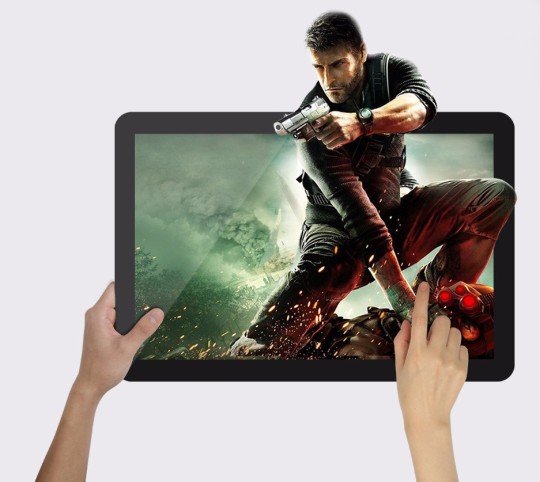
Full Gigabit Wired Connections for Ultrafast Data Transfer Speed with one gigabit Internet port and four gigabit Ethernet ports, speeds can be up to 10x faster than Ethernet connections.
The AC6 is a powerful hub to support a robust and extremely fast wires network.


External Antennas for Fully Expanded Coverage With 2 external dual-band antennas combined with higher quality antenna technology, you can maintain high speeds across greater distances. THis provides you with incredible wireless coverage and reliability form anywhere in your large home or office. Beamforming + also reduces interference from other devices for stronger WiFi connections so you can enjoy high bandwidth up to 90% activities easily.
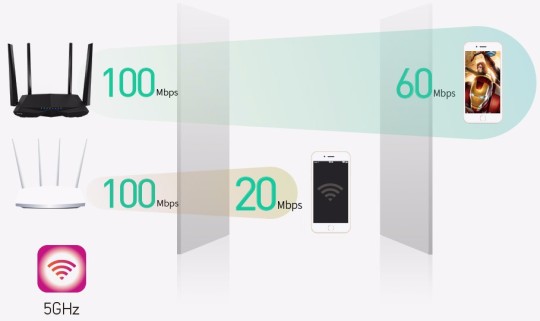
4 antenna, signal coverage perfect
AC6 is equipped with four powerful 5dbi external high-gain antenna, the use of advanced serpentine traces multi oscillator radiation, each of Angular aligment have been repeatedly verigied, taking into account the type and gain of the signal field, the transmission efficiency up to 90% so that the source of the signal on the strong play of sun cream every minute.
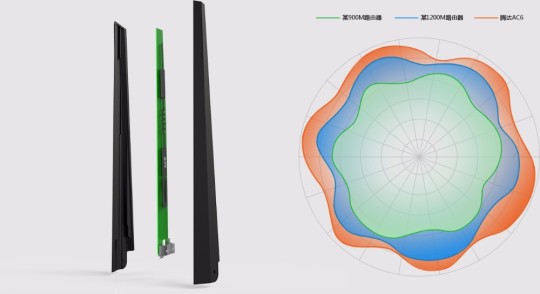

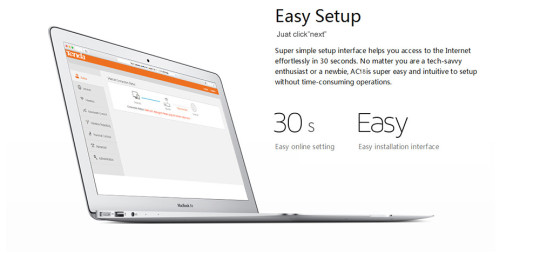

WAN interface 1 WAN 10/100 port
LAN interface 3 LAN 10/100 port
Antenna number 4
Antenna type external omni-directional antenna
Antenna gain 5dBi
Size 220*141.5*49mm
Wireless standard 802.11a/b/g/n/ac
Wireless rate of dual frequency with the highest rate of 1167Mbps, where the 5GHz band 867Mbps, 2.4GHz band 300Mbps
Working frequency band / frequency 2.4GHz, 5GHz
Support protocol support
WPS support
WDS function supports universal relay
Firewall built-in firewall
DHCP server support
Qos support
Wireless security encryption mode: WPA-PSK/WPA2-PSK, WPA/WPA2
Wireless encryption disable and enable
WPS fast secure connection
Software function wireless signal regulation, WiFi timer switch, LED timer switch, intelligent power saving, IPTV TV, VPN server, Tengda APP, Tengda cloud, etc.
Working environment temperature: 0 to 40
Storage temperature: -40 to 70
Working humidity: 10% to 90%RH does not condense
Storage humidity: 5% to 90%RH does not condense










0 notes
Photo

On Sale in Pakistan: https://www.shopperspk.com/product/intel-z390-atx-gaming-motherboard-with-optimem-ii-aura-sync-rgb-led-lighting-ddr4-4266-mhz-support-32gbps-m-2-intel-optane-memory-ready-and-native-usb-3-1-gen-2/
Intel Z390 ATX gaming motherboard with OptiMem II, Aura Sync RGB LED lighting, DDR4 4266+ MHz support, 32Gbps M.2, Intel Optane memory ready, and native USB 3.1 Gen 2.

Missing Attachment
Deccription:
TUF Protection: SafeSlot, ESD guards, DDR4 overvoltage protection, Digi+ VRM, and stainless-steel back I/O for long-term reliability
Military-grade TUF Components: TUF LANGuard, TUF chokes, TUF capacitors, and TUF MOSFETs for maximum durability
OptiMem II: Careful routing of traces and vias, plus ground layer optimizations to preserve signal integrity for improved memory overclocking
MemOK! II: Automatically fixes boot failures that arise due to memory overclocking and instability
Realtek S1200A Codec: Features an unprecedented 108dB signal-to-noise ratio for the stereo line-out and a 103dB SNR for the line-in, providing pristine audio quality
GPU Temperature Sensing & Fan Xpert 4: Ensures every fan achieves the best balance of cooling performance and acoustics
Aura Sync RGB: Synchronize LED lighting with a vast portfolio of compatible PC gear
Arm Your Battlestation
TUF Gaming motherboards are specially designed and tested to survive and thrive in conditions where other boards would struggle. Engineered with highly durable components, these motherboards deliver unwavering stability for gaming sessions that last as long as you demand.
When you build with a TUF Gaming motherboard, you also benefit from the TUF Gaming Alliance — an ASUS collaboration with trusted industry partners that ensures easier building, the best compatibility, and complementary aesthetics from components to case.
Easy PC DIY
TUF Gaming motherboards offer easy and safe DIY builds by leveraging great design, innovative engineering, and strong partnerships with major component manufacturers. The unrivalled combination of military-grade TUF Components, TUF Protection and the TUF Gaming Alliance means that you can rest assured that your gaming rig will go the distance.
TUF Gaming Alliance
TUF Gaming Alliance is a collaboration between ASUS and trusted PC-component brands to ensure compatibility with a wide range of parts, such as PC cases, power supplies, CPU coolers, memory kits and more. With more partnerships and components being added regularly, the TUF Gaming Alliance will continue to grow even stronger.
SETUP AND CONFIGURATION
TUF Gaming motherboards are designed to be easy to set up and configure just the way you want, even for first-time builders. With simplified CPU and memory overclocking to optimize and boost performance, intelligent cooling controls for better system stability, and helpful troubleshooting tools to get you up and running quickly if you encounter problems, TUF Gaming motherboards give you everything you need to build your dream gaming rig without adding complexity.
Gaming Performance And Asthetic Customization
TUF Gaming Z390 provides a complete, high-performance gaming package with a long list of features to improve your experience, including ultrafast networking for smoother online gameplay, immersive audio with positional cues for FPS gaming, and onboard RGB lighting that syncs with attached accessories to help you create the perfect gaming atmosphere.
Intel CPU and Chipset features
INTEL Z390 CHIPSET
The Intel® Z390 is a single-chipset design that supports Socket 1151 for 9th Gen and 8th Gen Intel® Core™, Pentium® Gold and Celeron® processors. It provides improved performance by utilizing serial point-to-point links, allowing increased bandwidth and stability. Additionally, the chipset provides a maximum of six USB 3.1 Gen 2 ports, four USB 3.1 Gen 1 ports, and 32Gbps M.2 and PCIe 3.0 lane speed support, for faster data retrieval. Intel Z390 also supports integrated-graphics, so you’ll enjoy the very latest in graphics performance.
READY FOR SOCKET 1151 FOR 9TH / 8TH GEN INTEL® CORE™, PENTIUM® GOLD AND CELERON® PROCESSORS
This motherboard supports Socket 1151 for 9th Gen and 8th Gen Intel® Core™, Pentium® Gold and Celeron® processors, with integrated graphics, memory and PCI Express controllers to support onboard graphics output with dedicated chipsets, dual-channel (4-DIMM) DDR4 memory and 16 PCI Express 3.0/2.0 lanes for great performance.
CPU
Intel® Socket 1151 9th / 8th Gen Intel® Core™, Pentium® Gold and Celeron® Processors
Supports Intel® 14 nm CPU
Supports Intel® Turbo Boost Technology 3.0
* Refer to www.asus.com for CPU support list
* The Intel® Turbo Boost Technology 3.0 Support Depends on the CPU types.
Chipset
Intel® Z390
Memory
4 x DIMM, Max. 64GB, DDR4 4266(O.C.)/4133(O.C.)/4000(O.C.)/3866(O.C.)/3733(O.C.)/3600(O.C.)/3466(O.C.)/3400(O.C.)/3333(O.C.)/3300(O.C.)/3200(O.C.)/3000(O.C.)/2800(O.C.)/2666/2400/2133 MHz Non-ECC, Un-buffered Memory
Dual Channel Memory Architecture
Supports Intel® Extreme Memory Profile (XMP)
* Refer to www.asus.com for the Memory QVL (Qualified Vendors Lists).
* The maximum memory frequency supported varies by processor.
Graphic
Integrated Graphics Processor- Intel® UHD Graphics support
Multi-VGA output support : HDMI/DisplayPort ports
– Supports HDMI with max. resolution 4096 x 2160 @ 30 Hz
– Supports DisplayPort with max. resolution 4096 x 2304 @ 60 Hz
Supports Intel® InTru™ 3D, Quick Sync Video, Clear Video HD Technology, Insider™
DP 1.2 Multi-Stream Transport compliant, supports DP 1.2 monitor daisy chain up to 3 displays
Multi-GPU Support
Supports AMD CrossFireX™ Technology
Expansion Slots
1 x PCIe 3.0/2.0 x16 (x16 or x8+x4+x4)
1 x PCIe 3.0/2.0 x16 (max at x4 mode) *1
4 x PCIe 3.0/2.0 x1 *1
*For 3 SSD on CPU support, install a Hyper M.2 X16 card (sold separately) into the PCIeX16_1 slot, enable this card under BIOS settings.
Storage
Intel® Z390 Chipset :
1 x M.2 Socket 3, with M key, type 2242/2260/2280 storage devices support (SATA & PCIE 3.0 x 4 mode)*2
1 x M.2 Socket 3, with M key, type 2242/2260/2280/22110 storage devices support (SATA & PCIE 3.0 x 4 mode)*3
6 x SATA 6Gb/s port(s), gray, *3
Support Raid 0, 1, 5, 10
Intel® Rapid Storage Technology supports
Intel® Optane™ Memory Ready
Intel® CPU with Intel® Rapid Storage Technology support (RAID 0 & RAID 1)
PCIEX16_1 slot supports up to 3 Intel® PCIe NVME SSDs via a Hyper M.2 X16 series Card*4
LAN
Intel® I219V, featuring Turbo LAN
TUF LANGuard
Dual interconnect between the integrated Media Access Controller (MAC) and physical layer (PHY)
Audio
Realtek® ALC S1200A 8-Channel High Definition Audio CODEC
– Supports : Jack-detection, Front Panel Jack-retasking
Audio Feature :
– Exclusive DTS Custom for GAMING Headsets.
– Audio Shielding: Ensures precision analog/digital separation and greatly reduced multi-lateral interference
– Dedicated audio PCB layers: Separate layers for left and right channels to guard the quality of the sensitive audio signals
– Premium Japanese audio capacitors: Provide warm, natural and immersive sound with exceptional clarity and fidelity
* Choose the chassis with HD audio module in front panel to support 8-channel audio output.
USB Ports
Intel® Z390 Chipset :
2 x USB 3.1 Gen 2 port(s) (2 at back panel, , Type-A)
Intel® Z390 Chipset :
8 x USB 3.1 Gen 1 port(s) (4 at back panel, , Type-A, 4 at mid-board)
Intel® Z390 Chipset :
4 x USB 2.0/1.1 port(s) (4 at mid-board)
Special Features
Fan Xpert4
– Advanced fan and liquid controls for ultimate cooling and quietness
ASUS TUF PROTECTION
– ASUS DIGI+ VRM: Precision control for stable power
– ASUS SafeSlot: Protect your graphics card Investment
– ASUS ESD Guard: Enhanced ESD protection
– ASUS Overvoltage Protection: World-class circuit-protecting power design
– ASUS Stainless-Steel Back I/O: 3X corrosion-resistance for greater durability!
– ASUS LANGuard: Protects against LAN surges, lightning strikes and static-electricity discharges!
ASUS Optimem II:
– Optimem (Improved DDR4 stability)
ASUS EPU :
– EPU
TUF ENGINE! Power Design :
– TUF Components (Choke, Cap. & MOSFET; certified by military-standard)
AURA :
– Aura Lighting Control
– Aura RGB Strip Headers
ASUS Exclusive Features :
– AI Suite 3
– Ai Charger
– Turbo LAN
– PC Cleaner
– File Transfer
– ASUS C.P.R.(CPU Parameter Recall)
ASUS Quiet Thermal Solution :
– Stylish Fanless Design: PCH Heat-sink & MOS Heat-sink & M.2 Heat-sink solution
– ASUS Fan Xpert 4
ASUS EZ DIY :
– ASUS O.C. Tuner
– ASUS CrashFree BIOS 3
– ASUS EZ Flash 3
– ASUS UEFI BIOS EZ Mode
ASUS Q-Design :
– ASUS Q-Slot
– ASUS Q-DIMM
M.2 Onboard(The latest transfer technologies with up to 32Gb/s data transfer speeds)
MemOK! II
– Enhance memory compatibility. More smart and convenient. Keep high performance. (Shorten the PC starting time)
Q-Installer
– Auto download driver and software. Friendly for first PC builder.
Back I/O Ports
1 x PS/2 keyboard (purple)
1 x PS/2 mouse (green)
1 x DisplayPort
1 x HDMI
1 x LAN (RJ45) port(s)
2 x USB 3.1 Gen 2 Type-A,
4 x USB 3.1 Gen 1 Type-A
3 x 8-channel Audio I/O
Internal I/O Ports
2 x Aura RGB Strip Header(s)
2 x USB 3.1 Gen 1(up to 5Gbps) connector(s) support(s) additional 4 USB 3.1 Gen 1 port(s)
2 x USB 2.0 1-port connector(s) support(s) additional 4 USB 2.0 port(s)
1 x M.2 Socket 3 with M key, type 2242/2260/2280 storage devices support (SATA & PCIE 3.0 x 4 mode)
1 x M.2 Socket 3 with M key, type 2242/2260/2280/22110 storage devices support (SATA & PCIE 3.0 x 4 mode)
6 x SATA 6Gb/s connector(s)
1 x CPU Fan connector(s) (4 -pin)
1 x CPU OPT Fan connector(s) (4 -pin)
2 x Chassis Fan connector(s) (4 -pin)
1 x AIO_PUMP connector ()
1 x S/PDIF out header(s)
1 x 8-pin EATX 12 V Power connector
1 x 24-pin EATX Power connector(s)
1 x Front panel audio connector(s) (AAFP)
1 x MemOK! II switch(es)
1 x Clear CMOS jumper(s)
1 x System panel connector
Accessories
User’s manual
I/O Shield
2 x SATA 6Gb/s cable(s)
1 x M.2 Screw Package
1 x ASUS 2T2R dual band Wi-Fi moving antennas (Wi-Fi 802.11a/b/g/n/ac compliant)
1 x TUF Gaming Sticker
1 x TUF Certification card(s)
1 x SCD (by region)
BIOS
128 Mb Flash ROM, UEFI AMI BIOS, PnP, SM BIOS 3.1, ACPI 6.1, Multi-language BIOS, ASUS EZ Flash 3, CrashFree BIOS 3, F11 EZ Tuning Wizard, F6 Qfan Control, F3 My Favorites, Last Modified log, F9 Search, F12 PrintScreen, and ASUS DRAM SPD (Serial Presence Detect) memory information
Support Disc
Drivers
ASUS Utilities
ASUS EZ Update
Anti-virus software (OEM version)
Operating System
Windows® 10 64-bit
Form Factor
ATX Form Factor
12.0 inch x 9.6 inch ( 30.5 cm x 24.4 cm )
Management Solution
WOL by PME, PXE
Note
*1. The PCIe x1_3, PCIe x1_4 slots share bandwidth with PCIe x16_2. The PCIe x16_2 slot runs at x2 mode as default. Please check BIOS for more configuration.
*2. When a device in SATA mode is installed on the M.2_1 socket, SATA_2 port cannot be used.
*3. When a device is installed on the M.2_2 socket, SATA_5/6 port cannot be used.
*4. Supports CPU RAID with Intel® PCIe NVME SSDs. RAID 0 and 1 are supported via a Hyper M.2 X16 series card or on RAID sets created between the onboard M.2 socket and a Hyper M.2 X16 series card.
0 notes
Text
Best dash cam 2018: 10 car-ready cameras for peace of mind
It's never a bad idea to have a dash cam mounted in your car - you never know when you'll need footage from your windshield.

Finding the best dash cam in 2018 can feel overwhelming; there are so many models out there, and many companies make more than one.
But, once you find the best dash cam for you, it can be one of the most crucial bits of tech you own, coming in handy in the event of an accident, or in case something really amazing happens on the road that helps you become YouTube famous.
We've sifted through some of the top dash cams to nail down the very best dash cameras for 2018. It's important to point out that dash cams are much more than GoPros mounted on your car's dashboard; these are car-ready cameras that perform some critical functions and can even help you save time and money that would be better spent going back into your vehicle.
Whether used to provide evidence to your insurance company or help you avoid paying for a crash-for-cash scheme, dash cams provide some peace of mind wherever your journey takes you.
Don't get lost with the best sat navs of 2018
Best dash cam: what to look for
Generally the best dash cams have similar technology to one another, and for the most part mount somewhere along a car's front windscreen, or windshield. Of course, wherever you place your dash cam must not block your view of the road.
Dash cams record smaller snippets of footage, usually in increments of one to two minutes at a time. The cameras continually record over the oldest clip in order to keep the memory card from filling up as well.
And while older models typically required the user to manually save or tag the appropriate clip in the event of an accident, new G-Sensor-based incident detection technology has taken over, and now takes care of this automatically.
There are also dash cams that boast additional features that, just like any other technology, see the price increase

There are also dash cams that boast additional features that, just like any other technology, see the price increase.
These extra features can include multiple lenses for front- and rear-facing coverage, improved sensor and image quality (HD recording, for example), night vision, built-in Wi-Fi for easy file transfer and numerous parking modes.
These modes use a time-lapse feature as a surveillance function to capture details of those irksome car park prangs when you're off running errands.
Whenever we get a new dash cam review in, we'll update this list with more of the best we've tested. Keep reading to find out which rank among the best dash cams 2018!
1. Garmin Dash Cam 55
It It might be small, but it packs in a lot into a compact body.
Video quality: 1440p | Viewing angle: 122 degrees | GPS tracker: Yes | Memory: MicroSD card (included)
CHECK AMAZON INDIA
Compact sizeExcellent video qualityApps offer limited controlSmall battery

Garmin has applied its knowledge of action cameras and fitness trackers to the world of dash cams, and its mid-range Dash Cam 55 model offers sharp imagery and enough additional features to make it our top choice.
Offering 1440p video capture at 30p, video footage for a dash cam is great, while the 122 degree viewing angle is pretty good, though there are wider optics out there. A nice touch is the inclusion of an attachable polarizing filter to cutout unwanted glare from your car's windscreen on dash camera with gps tracking .
Vital clips are automatically stored via the built-in G-Sensor technology, and thanks to the built-in GPS unit, all footage is stamped with time and location so there's no disputing when and where an incident happens.
Chuck in the voice control, drive awareness warnings and the neat little travelapse feature, and the Garmin Dash Cam 55 is one great best dash cam.
2. Nextbase Duo
Offers both front- and rear-facing cameras
CHECK AMAZON INDIA
Two cameras in oneGPS functionalityNo Wi-Fi or Bluetooth connectivityLow image resolution
Nextbase has long been a leading name on the dashcam market, and this dual camera unit offers both front- and rear-facing coverage in one simple unit, as opposed to running unsightly wires to a separate unit in the rear windscreen.

The Wide Dynamic Range (WDR) image processor makes low light and night time recording possible, while the crystal clear two-inch display makes it simple to interact with menus and change settings before setting off.
At 720p resolution, the footage isn't the sharpest on the market, but the unit cleverly stitches both front and rear imagery together into one handy, side-by-side film for easier reviewing.
Naturally, the Nextbase features a loop recording function, which will automatically delete older files as required. But it will also automatically detect and incident and save important clips to the on-board microSD card.
It also features a built-in GPS module, which allows for the vehicle's exact route, speed and position to be recorded, while a date and time stamp embedded on to the recorded footage provide further additional evidence.
Unfortunately, there isn't any Wi-Fi or Bluetooth compatibility, so retrieving footage will require extraction of the memory card and synching up with a laptop or PC.
3. Thinkware TW-F770
Onboard Wi-Fi for quick video transfer
Video quality: 1080p Full HD | Viewing angle: 140 degrees | GPS tracker: Yes | Memory: MicroSD card (included) and internal memory
CHECK AMAZON INDIA
Crystal-clear footageGreat night modeNo rear cameraButtons fiddly
The super 2.19MP Sony Exmor CMOS sensor provides excellent quality from this sleek and diminutive package, while the additional extra flourishes are an added bonus.
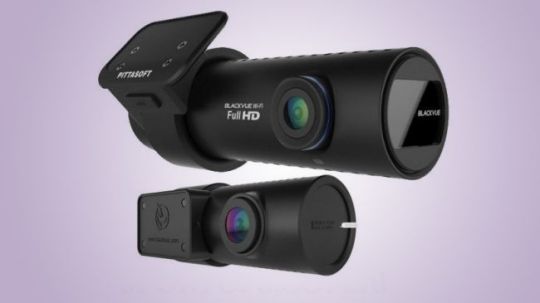
Designed to be mounted just beneath the rear-view mirror, the TW-F770 features just a few small buttons and no external screen – this is because it can be linked to a smartphone via its on-board Wi-Fi.
This enables clips to be quickly and easily sent to a smart device, should you need to access them quickly, for example, but it does add an additional step to any settings and menu changes.
A Super Night Vision feature boosts low-light settings for improved image quality at night, while a neat Time Lapse feature acts as a CCTV camera when the vehicle is parked.
Bear in mind, though, that this mode will require hard-wiring the unit into the vehicle's power supply, as is the case with most cameras featured on this list, rather than simply using a standard 12V lighter adaptor.
An on-board GPS tracker, as well as speed and upcoming red traffic signal warnings make this a very accomplished piece of kit.
4. BlackVue DR650S-2CH 32G Dash Cam
The choice of professional drivers
Video quality: 1080p Full HD | Viewing angle: 129 degrees | GPS tracker: Yes | Memory: MicroSD card (included)
CHECK AMAZON INDIA
A professional solutionFull HD recordingExpensiveInitial set-up can be tricky
Often cited as one of the best solutions for regular or professional drivers, the dual-camera BlackVue covers many bases and boasts numerous additional features that go some way to justifying the lofty price tag.
To get the most out of its features, including a detailed parking surveillance mode, the cameras require hard-wiring to the car's power supply, but BlackVue makes this easier with an OBD II port converter, which plugs into most vehicle on-board diagnostics ports with ease.
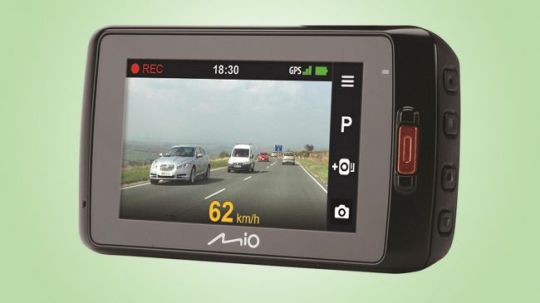
The 2MP CMOS sensor and 129-degree lens capture excellent-quality HD video footage from the front camera, while a smaller unit at the rear records in 720p, with incident detection technology automatically flagging the appropriate video footage.
The BlackVue's clear advantage over some of the rivals listed here is its Over-the-Cloud abilities, which mean drivers can check live footage from the car via a smartphone, laptop or PC, even when it's parked.
The small, sleek unit is also neat and doesn't look out of place on modern vehicles, although the lack of screen and limited buttons mean it does require smartphone tethering to adjust settings.
5. Mio MiVue 698 Dual 1080p
It may be getting old, but it's still one of the best
Video quality: 1080p Full HD | Viewing angle: 150 degrees | GPS tracker: Yes | Memory: MicroSD card
Great all-round packageCrisp video footageNo memory card includedStarting to age
Although the Mio MiVue 698 has been on the market for a year or so, it still remains one of the best packages around, offering superb image quality, front and rear coverage and a clear touchscreen for simple control.

The screen automatically blacks out when it detects movement, to abide with some country's road laws and avoid unwanted distractions, but clear audio prompts take over to warn of upcoming speed traps once the screen is dimmed.
Built-in GPS takes care of speed and location video overlays, while built-in Wi-Fi makes video and image transfer to smartphones and other devices simple.
Above all else, the extra-wide 150-degree lens does an excellent job of capturing the action, while a high-performing sensor ensures the resulting video footage is some of the best around.
6. Z-Edge Z3
Simple to use with razor-sharp images
Video quality: 2K and 1080p Full HD | Viewing angle: 145 degrees | GPS tracker: No | Memory: MicroSD card (included)
Superb image qualityEasy auto operationFewer features than rivalsNo GPS tracker
With its sharp 'Ultra 2K HD’ image quality, broad 145-degree field of view and super-simple user interface, the Z-Edge Z3 has regularly been voted one of the best devices in its class.
The CMOS sensor and advanced image processor ensure the resulting footage is razor sharp, making it easier to read licence plates and capture incidents with superb clarity.

A 3-inch touchscreen display makes interacting with the camera extremely easy, although you'll likely just set the camera up and let it do its thing, as most of the functionality has been automated for ease of use.
Like most cameras on the list, the unit will power up and instantly start recording when the ignition is switched on (so long as it's plugged into a power source), and turn off when power is cut.
Memory is managed via a loop recording function, and incident detection ensures vital clips aren't erased.
In short, it's a great package for those who simply want a fuss-free camera that delivers quality images without the hassle.
7. TaoTronics TT-CD06
A great low-light performer
Video quality: 2K and 1080p Full HD | Viewing angle: 160 degrees | GPS tracker: No | Memory: MicroSD card (included)
Super-wide field of viewGood low-light capabilitiesNo GPSSmall buttons
Considering the price point, it's very difficult to fault this TaoTronics model, even if it doesn't boast GPS for speed and location recording or some of the added niceties of more expensive rivals.

That said, there's plenty in the box to get excited about, chiefly the various well-made suction or adhesive mounts, the extra-long power cable and a 12V lighter socket adapter that features two ports, meaning you can still charge your phone with the dashcam running.
The unit itself boasts a G-sensor, for automatic saving of important incident footage, as well as a super-wide 160-degree field of view that's able to capture five lanes of traffic.
Low-light video footage is very good, and the audio quality is surprisingly good at this price.
Minor foibles include the small and fiddly buttons, while the lack of speed and positioning information might be a deal-breaker for some.
8. Cobra CDR 840
Looks great and easy to use
Video quality: 1080p Full HD | Viewing angle: 118 degrees | GPS tracker: Yes | Memory: MicroSD card (included)
Great priceStylish packageStruggles in low lightGPS can be unreliable
A dashcam isn't exactly the sort of thing you purchase for its smouldering looks, but the Cobra CDR 840 is one of the very few units on this list that seems to have been designed with aesthetics in mind.

The rear touchscreen may be small, but it's sharp and very easy to navigate thanks to a simple joypad-style switch interface, with a clearly labelled, bright red button for manually saving important clips.
Built-in GPS will take care of speed and location, while the G-Sensor tech will automatically save clips should the device detect an accident.
The GPS system can prove a little touch-and-go if satellites are difficult to reach or if adverse weather is playing havoc with the signal, but this is another unit that's very quick and easy to set up, with minimal on-going attention required.
9. YI Smart Dash Camera
Lots of tech in a small package
Video quality: 1080p Full HD | Viewing angle: 165 degrees | GPS tracker: No | Memory: MicroSD car
Lane departure warningBuilt-in Wi-FiLack of GPSSuction mount could be better
Yi is a recent entrant into the action camera arena, and is also busy plying its trade in the world of dashcams with some neat units that cram a large amount of technology into their small forms.

The huge field of view on its Smart Dash Camera model means it can monitor the surrounding area and even warn the driver if the vehicle is straying out of its lane. Plus, a forward collision warning sounds if the device senses an impending impact with the vehicle ahead.
This is all part of the Advanced Driver Assistance System (ADAS) package, which works in conjunction with G-Sensor technology and sees the camera automatically record and save clips in an emergency situation.
An impressive all-glass, high-resolution lens and f/1.8 aperture means that video recorded in low-light situations is crisp and clear.
10. RoadHawk DC-2 HD GPS Dash Cam
Great image quality, but lacks looks
Video quality: 1080p Full HD | Viewing angle: 120 degrees | GPS tracker: Yes | Memory: MicroSD card (included)
Image stabilizationExternal audio inputNot very stylishLimited features
Simplicity is the name of the game here, and what the RoadHawk DC-2 lacks in exterior looks and additional features it more than makes up for with great image and audio quality.

Gyro-balanced image stabilization and a high-quality sensor team up to create excellent footage, even in low-light scenarios, while an audio-in connection allows additional microphones to be added.
GPS technology is included to take care of speed and location data, although an external GPS antenna connection is also offered should you require a more powerful and reliable signal.
0 notes
Text
What is the open packet optical switch, Voyager?
Modern web-scale data centers are thirsty for bandwidth. Popular applications such as video and virtual reality are increasing in demand, causing data centers to require higher and higher bandwidths — both within data centers and between data centers. In this blog post, we will briefly discuss the current challenges in the optics space as well as some of the key technical aspects of the Voyager’s DWDM transponders. In part two of this series, we will cover why Voyager is a unique, powerful and robust solution.
The challenges to accommodate longer distances
Within a data center, organizations are adding higher and higher bandwidth ports and connections to accommodate the need for more bandwidth. However, connections that accommodate longer distances between data centers may be limited and expensive. Therefore, a critical requirement for businesses with this challenge is how to support longer distance spans at higher bandwidths over a small amount of fiber pairs.
The optical industry solves the bandwidth problem using Dense Wave Division Multiplexing (DWDM). DWDM allows many separate connections on one fiber pair by sending them over different wavelengths. Although the wavelengths are sent on the same physical fiber, they act as “ships in the night” and don’t interact with each other, similar to VLANs on a trunk. Each wavelength can transport very high speeds (hundreds of Gigabits per second) over very long distances. While this is an incredible feat, today’s DWDM systems are typically closed and expensive. The transponders (which I’ll be explaining in more detail below) are generally the most expensive part of the closed DWDM network.
Announcing Voyager early access
Back in November, we announced the partnership between Cumulus and the open packet DWDM platform Facebook brought to the Telecom Infra Project (TIP), called Voyager, bringing the first open packet optical product to the industry. In just a few weeks, Voyager will officially be available for early access, and we’ll be rolling out a variety of resources for you to get to know the solution in more detail. Voyager is a Broadcom Tomahawk-based switch, similar to Facebook’s Wedge 100, but with added DWDM ports that can connect to another switch tens, hundreds or thousands of kilometers away by adding transponders.
By running Cumulus Linux, Voyager brings all the functionality of Cumulus with it, including BGP, EVPN, OSPF, Layer 2, native network automation and advanced monitoring — right to the optical world in just 1RU. We have also added typical DWDM transponder features, such as configuring power, wavelength, FEC, speed and performance monitoring. And of course, being Cumulus Linux, it’s extremely cost effective too. Finally, integrating L1/L2 and L3 all on Linux may enable you to reduce the number of nodes in the network and unify the entire data center from the hosts to the switches and even to the optical devices!
What is a DWDM transponder?
For reference, a typical active DWDM network is depicted below. Depending upon the use case, all elements below are not required for Voyager deployment. For example, Voyager can also be deployed over dark fiber with no ROADMs.
Voyager is the transponder (TPDR) in the below scenario and is also a Layer2/3 switch with all the functionality of a Broadcom Tomahawk switch with Cumulus Linux.
The transponder lives primarily at the edge of the DWDM network (with some exceptions, like when back-to-back transponders are used as a regenerator) and has a port to connect to a switch or router and a port to connect to the DWDM line system facing the remote end. In some cases, such as Voyager, the transponder could be located within a switch or router (i.e. the same box does switching, routing and transponding).
A muxponder is similar to a transponder, only it also performs time division multiplexing (TDM) over a pre-specified wavelength. For example, with a muxponder, you can send ten 10GigE links over a single 100G wavelength. Voyager will support this functionality as well.
What does a transponder do?
A transponder performs an optical-electrical-optical conversion and is primarily responsible for three tasks:
Converting the “grey” wavelength (850nm, 1310nm or 1550nm) to a pre-specified C-band wavelength and back
Encapsulating/decapsulating the ethernet frame into a layer 1 OTN or OTN-like frame and providing performance monitoring and forward error correction (FEC)
Modulating, transmitting, receiving, demodulating and controlling signal power
After the wavelength leaves the transponders line side port, it is typically multiplexed with other wavelengths and travels through the network over single mode fiber. Any wavelength could be dropped off or added at any site with a ROADM. At the remote end, the signal is de-multiplexed before being handed back to the transponder. The transponder provides performance monitoring, fixes any transmission errors and decapsulates the OTN frame before handing the ethernet frame back to a switch or router or an upper layer.
Voyager combines the transponder with L2/L3 — doing the “ethernet handoff” internally to Voyager itself.
What is a C-band wavelength?
The ITU-T divides the fiber optic communication spectrum (part of the infrared section of the full electromagnetic spectrum) into 6 bands: O, E, S, C, L and U. The attenuation across a single mode fiber optic cable is lowest (0.20-0.25dB/km) at the C-band (or conventional band), so it is primarily used for DWDM communications. Also, low cost Erbium Doped Fiber Amplifiers (EDFAs) help boost signals operating at this range. Voyager will support transmitting/receiving on the C-band.
The C-band wavelength spectrum used by Voyager is shown below:
The Voyager line port can be tuned to use a pre-specified C-band wavelength. It will support tuning at 50GHz spacing and flex spacing at 12.5GHz increments. The channels are fixed and determined at every 12.5GHz or 50GHz along the spectrum, identified by ITU-T G.694.1. With flex grid, they can be chosen by the operator at every 12.5GHz, with the operator being careful not to let the channels sidebands overlap. The sidebands can be different depending on the speed and modulation type of the channel.
What is an OTN or OTN-like frame?
An Optical Transport Network (OTN) frame (or the like) is used with DWDM. An ethernet frame is run inside it for this application.
It looks similar to the following:
As you can see, an OTN frame (which is in the electrical domain) consists of three overhead layers and they are analogous to SONET Line, Section and Path overheads:
Optical Transport Unit (OTU): Between optical network elements
Optical Data Unit (ODU): Network level
Optical Path Unit (OPU): Responsible for end-to-end
It also offers Forward Error Correction (FEC) and OAM&P (performance monitoring) capabilities within the overheads. Using amplifiers (specifically EDFAs) in a network can increase noise, thereby reducing signal quality and creating potential errors. FEC is used to correct the errors.
Several FEC algorithms exist in the industry today. Generally, the Soft Decision (SD) FECs can correct more errors than Hard Decision FECs, so the optical network can push longer distances at faster speeds with an SD-FEC. Voyager will run an SD-FEC.
Performance monitoring consists of reporting and keeping track of when there are errors in the network. For example, it keeps track of the pre-FEC bit error rate (BER), which is how many errors the FEC had to correct to be able to deliver a clean frame up to the higher layers. All of these characteristics can tell an operator if the network has issues, such as a degrading amplifier.
What is modulation and transmitting?
A transponder/muxponder is also responsible for modulating the signal and transmitting the signal at the appropriate power level. Transmitting at too little power won’t drive very far, and transmitting at too much power can distort the signal. Voyager will be able to effectively transmit up to +2.5dBm.
Different modulations are typically used with different bit rates. For example, lower bit rates at or below 10Gbps may use on-off keying (OOK). OOK is a simple modulation method that turns light on to signify a binary “1” and turns light off to signify a binary “0”. In this scenario, the bit rate and the symbol (baud) rate (signals through the fiber) are the same. Phase Shift Keying (PSK) uses the same idea, but instead of changing the power of the signal, it changes its phase to denote a binary “0” or “1”.
As we get to higher and higher bit rates, we want to keep the baud rate low to minimize distortions while increasing the bit rate we send. This leads to more complex modulation types, such as QPSK (Quadrature Phase Shift Keying) and 8 & 16 QAM (Quadrature Amplitude Modulation). QPSK transmits 2 bits per baud, 8 QAM transmits 3 bits per baud and 16 QAM transmits 4 bits per baud. Additionally, when we modulate 2 orthogonal polarizations separately (sometimes called Dual Polarization or Polarization Division Multiplexing), we double the throughput. Voyager will support QPSK with 100Gbps, 8QAM with 150Gbps, and 16QAM with 200Gbps with PDM.
As more and more bits per symbol are transmitted, more symbols are needed to represent the different bit patterns. The symbols are then represented closer together and thus more difficult to distinguish from each other. Therefore, the signal needs to be “cleaner” and have less noise in order to read it effectively. This leads to shorter supported distances and the need for more complex FEC algorithms, such as SD-FEC.
Of course, a transponder also receives and demodulates the signal on the remote end.
What now?
At this point, you hopefully understand the basic technical challenges and needs with DWDM. This blog post covered the technical aspects of a transponder within Voyager. In part two, we will cover the question “Why Voyager?” and discuss Voyager functionality and use cases in greater detail. We couldn’t be more excited to be releasing Voyager for early access in just a few weeks, along with several supporting resources. If you’re dying to check it out in more detail in the meantime, visit Adva’s website, as they will be supporting and selling the product with Cumulus Linux, or contact TIP. Stay Tuned for more!
The post What is the open packet optical switch, Voyager? appeared first on Cumulus Networks Blog.
What is the open packet optical switch, Voyager? published first on https://wdmsh.tumblr.com/
0 notes
Text
Home and Small Office Networking Guide
So what is a network?
A network supports the interconnection of many devices and a protocol for ensuring they can communicate with one another in the most effective way. The best way to understand how networks work is to visualise each element of the network as a layer, one on top of another. The conceptual model that describes this layered model is known as the OSI Reference Model, which has seven layers. All Network professionals use this in their day to day design and engineering work.
For our purposes we can simplify it into three layers, going from the bottom up there is:
1. The Physical layer – the cable between machines (typically called 100BaseT, uses four pairs), the card in the back of your machine (802.3 Ethernet NIC) or Wireless Networking adapter (802.11n etc) etc.
2. Data Link, Network and Transport Layers – Responsible for managing the addressing, routing and packaging of data around the network. Includes the Internet protocol (TCP/IP), gaming and file transfer based protocols (such as UDP), and VPN networking from home to your office (PPTP or IPSec)
3. And the Session, Presentation and Application Layers – file sharing and database access in the office (NetBIOS, Named Pipes, NFS), Internet browsing (HTTP, DNS), eMail (MIME, SMTP, POP3) and securing Internet banking or shopping (SSL/TLS)
Breaking it out into layers like this helps us understand when we buy software or hardware which layer(s) it works at and therefore what it can provide for us. Is it providing connectivity, access to another Wide Area Network (WAN, i.e. for the Internet), security or access to my own Local Area Network (LAN, i.e. for access to a printer). It’s extremely useful when diagnosing problems with networks. Network Addressing
In order to send a letter to your friend in the next town, or a country on the other side of the world the postal system requires an address which hones down through the address layers from country to house number to narrow down exactly where your friend lives and which post box the postman should drop the letter in. Digital Networks work in a similar way only rather than moving mail around they move digital data packets.
MAC addresses – The Media Access Control address identifies a single piece of hardware on the physical network and is a scheme with a long number designed to be globally unique. It’s set in the hardware at the point of manufacture. An example of a MAC address is 1A-2F-1D-9C-7A-3C (Layer 2).
IP address – The Internet Protocol address uniquely identifies all network interfaces that are typically endpoints on the Internet, or your own local IP based network (in an office). Within the local or global (Internet) address space the IP address must be unique, otherwise the IP routing protocol won’t know where to send the packet. An IP address will be mapped across to a physical MAC address as described above, the mapping is held in the routing tables of router hardware on the network. A sample IP address is 192.168.0.1 (Layer 4). Addresses are divided up into Class A, B and C each having a larger address space for larger organisations requirements. Small offices and domestic addresses are almost always Class C and the 192.168.0.nnn network is reserved for anyone to use on any small private network.
DNS name (and server) – Domain Name Server based addresses are just names, with dots to designate levels of uniqueness. We are all familiar with Internet domain names such as ours in the resource box. The DNS name in this instance is the ‘cryopc’ element of the full address. DNS servers store all these hostnames and the IP addresses they map to.
Network Security
Your home hub/router will usually have built in security features, including the following:
MAC identification – Using the MAC address of the hardware as a list of authorised hardware to access your network. Its a good basic precaution but unfortunately a dedicated hacker can spoof a known MAC address and gain access if they really want to. It just stops the opportunists.
WEP and WPA – Are the most widely available forms of wireless network encryption and security. Without the WEP or WPA keys your wireless network is unusable to outsiders. WEP is now considered quite weak as hackers have demonstrated ways of cracking it fairly quickly, and once cracked its no longer secure. WPA is the more secure system as it is harder to crack (has a much longer passphrase) and once cracked still only leaves a very small window of opportunity for exploitation as it derives a cipher for each packet that changes constantly. It utilises TLS encryption just like the Internet checkout padlock. Still the network is only ever as secure as the passphrase used to protect it, so pick an obscure one.
VPN, SSL/TLS and IPsec – Most of us don’t even know we are using these technologies but they all work in a similar way. They use sophisticated and robust encryption to ensure private information sent over a public network is not visible to snoopers. SSL/TLS is used most widely and you will recognise it as the checkout padlock, or encryption used when typing in credit card details when Internet shopping.
NAT – Network Address Translation isn’t really security at all but about economising on the rapidly diminishing availability of IPv4 addresses on the Internet, but it does shield your private network addresses from the outside by creating the impression to the internet that only a single address (your routers own public address) is accessing the Internet from your network. This means ad hoc access to your local network from the outside is much more difficult without internal network devices initiating a connection first (and thereby establishing a NAT translation).
Typical network devices Segment – a segment isn’t really a device it’s a single network cable potentially connected to multiple machines, but sometimes only a single machine. It can be useful to think of it as a device in its own right as the cable itself imposes limits, resource demands and capabilities on the network.
Router – maps one address in one address space to another in another through routing tables and protocols stored on the device, usually in memory.
Hub / Switch – Most Hubs are known as switching hubs as each network port on the hub functions as its own segment of the LAN thus it’s able to utilise the full bandwidth of the link and not share it with everyone on the same LAN.
Firewall – Can be software or dedicated hardware based the latter widely being considered the best. Windows has a built in firewall and most home hub/routers also have them preconfigured and built-in. Firewall rules determine what traffic you want to let out, and into your network. Usually they are preconfigured to let out only connections initiated internally (to prevent ad hoc attacks) and to let back in only traffic on certain known safe ports such as those commonly used for the Internet, http and ftp. Games can sometimes have issues with firewalls as they will use other ad hoc ports. You will need to create custom rules to get around this problem.
Wireless Access Point – Wireless networks are effectively airborne segments of network. The access point serves as a point of access, and also secures the network as discussed in the above security section. In a small network it often makes sense to combine many network devices into a single physical device. That’s why most small office routers also have a Firewall, Hub and Wireless Access point built in. However in a medium sized organisation or large enterprise single devices need to have more reliability, capacity and security and so tend to be dedicated devices to a single purpose. A firewall for example can cost US$100 with a hub and router built-in or for a government departmental web site it could cost US$40,000 as a single appliance.
Benefits of different types of Network
Cable based networking – 802.3 Ethernet, which typically supports 100Mbit/s (CAT5 cable) or 1Gbit/s (CAT5e cable) speeds and higher if you are reasonably up to date. Most network devices are backward compatible and will fallback to the speed of the slowest device in the network. Cable is the best for reliability an speed.
Wireless Networking – It is defined by the standard 802.11a, b, g, and n (at Draft 2.0 stage at the time of writing this article). Wireless offers flexibility, roaming, convenience but quality of reception can be very patch in large or complex buildings and this affects connectivity and connection speed. In addition to the standards MIMO (Multiple-Input Multiple-Output) uses multiple antennas to increase signal strength and quality, increasing range and available bandwidth.
Broadband, ADSL and Cable – all use local telephony cable and fibre optic trunks to provide homes and small businesses with relatively high speed Internet access. Each one uses a different technology standard for implementation and you must buy the correct router or modem. Setting up your own home or small office network Based on the information provided above you need to decide what you need. If you are starting with nothing then a good quality 802.11n combination router/hub device is the best solution. They are now more or less preconfigured out of the box and only require connecting to the Internet. Access to mobile devices, laptops and desktops can be provided by the Wi-Fi support or for fixed desktop by network switch port and cable. Don’t forget to enable the WPA security with a good mixed alphanumeric and non-alphanumeric passphrase. For extra protection limit access to only device MAC addresses you know.
Troubleshooting my network
There are a number of low level tools that are very easy to use that help network engineers diagnose problems with your network. It pays dividends to get familiar with them for yourself. To use these tools in Windows run the command line interpreter cmd.exe (type in cmd after Start->Run), then simply type the command in.
ping – using a hostname or address it ‘bounces’ a network packet off the endpoint. Rather like a submarine using sonar, hence the name ‘ping’. It outputs status information to confirm whether it has been able to reach the endpoint or not and how long the roundtrip took.
ipconfig – reports all the network information for all of the network adapters on your PC including wireless, cable, MAC address (physical address), IP address, gateway address (router), subnet (class of address), hostnames, connection state etc.
tracert – reports the route through the network that a data packet will take to reach a host. It can help provide indications of why a connection might be slow or not working by indicating where it gets stuck in the network. Like ping it also reports time taken to travel the route.
Source by Alan M Johnson
Source: http://bitcoinswiz.com/home-and-small-office-networking-guide/
0 notes